North West Mountain Weather Resources
Mountain Weather Resources - Pacific Northwest Mountain Climbing Weather Series
Part I - Freezing Level
A big portion of for planning alpine climbing is interpreting weather forecasts.
This isn’t just, looking to see where it’s going to be sunny. A factor in deciding what day to focus a summit attempt and what time we need to be back to camp by is the freezing level . The freezing level indicates at what elevation the mountain surface froze or firmed up and may make for better, safer travel. When there’s a good freeze, the snow surface becomes more supportive, allowing for the highest potential for strong snow bridges and less labor intensive climbing.
As the surface moves outside of freezing temperatures travel can start to become more difficult, and the possibility of breaking through a snow bridge grows significantly. More difficult can be as frustrating and slow as “post holing”, which is for each step you take, you end up going up to your ankle or deeper. This clearly makes the team pace slow, the effort increase and generally isn’t very fun. This also is problematic regarding punching through snow bridges into crevasses. The level of concern depends largely on the amount of snow present on the mountain when you’re climbing. Though, if you’re punching through to your waist every step, not only are you not having fun, your also doing your best to locate the thinnest part of the snow bridge. So! generally speaking, freezing levels that are between are camp and the summit are good.
Now, does that mean at thirty-three degrees we run back to camp from where ever we are on the mountain, NO! Does that mean that we always go thigh deep in the snow every step, NO! It’s a helpful guideline and one metric for making decisions and there are contributing factors that can make the freezing level more or less relevant.
{Considerations that effect the quality of the freeze or non-freeze in the forecast}
Clear Nights
A clear night for example will allow the energy absorbed by the snow surface during the day to be released in to the atmosphere at night. A clear night combined with a favorable freezing level will often make for nice travel conditions in the early morning (pre-dawn) hours.
Cloudy Nights
A blanket of cloud cover can keep this absorbed energy from escaping into the atmosphere, and actually reflecting it back to the surface.
Wind
A high-er freezing level than your climb, but a continuously windy and clear night can still give a firm-er than expected surface condition in the morning.
Remember, this is all a “forecast” or a prediction of an event in the future, not a guarantee . Always compare this with your “nowcast” or what is actually happening right now.
A consideration becoming more and more relevant in our ever changing climbing season in the pacific north west is conditions being too hot to climb. Freezing levels above the summit, day time highs and night time lows consistently above freezing should be taken into consideration when planning your trip.
So why does this all matter?
Planning your climbs considering the freezing level can help you be off the mountain before conditions heat up. When conditions heat up there are more occurrences of:
Rock/ice fall (Things falling on you),
Crevasse fall (You falling into the mountain)
Trips/slips from fatigue or snow balling in crampons (You falling off the mountain)
These are the big three things we are always trying to manage when we climb. The more of them we have to manage at the same time the more potentially dangerous the situation may become. Given that we are climbing mountains, we can’t always remove all of these factors, but, we can more thoughtfully decide when we choose to travel. We can also better understand what risks we are accepting, and when the best time is to be on the mountain is, sometimes, that might be next weekend, and that’s ok.
As you can tell, there’s a lot that goes into the forecast and taking freezing levels into consideration. This is also just one piece of the puzzle when trip planning. Unfortunately, you won’t be able to master applying these skills by reading one blog post. Though, now you have the links at your finger tips to better understand one of the many factors taken into consideration when climbing in the mountains in the Pacific Northwest Summer.
West Slopes North Cascades & Passes
Major Cascade Summits in forecast Area:
Komo Kulshan (Mt. Baker) Mt. Shuksan, Most Summits in North Cascades National Park
These include the majority of Skagit and Whatcom County.
West Slopes North Central Cascades & Passes
Major Cascade Summits in forecast Area:
Dakobed (Glacier Peak) , Alpine Lakes Wilderness, Middle Fork Snoqaulime Zone
This Area includes the Mountains that are East of Arlington Wa to Puyallup hosting the majority of Alpine terrain in Snohomish and King Counties
West Slopes South Central Cascades & Passes
Major Cascade Summits in forecast area:
Tahoma (Mt.Rainer)
South Washington Cascades
Major Cascade Summits in forecast area: Mt. St Helens, Mt. Adams, Goat Rocks Wilderness
This in area hosts mainly Pierce and Lewis Counties
Olympics
Major Cascade Summits in forecast Area:
Mt. Olympus and the Majority of Olympic National Park
Steffan Gregory
AMGA Assistant Alpine Guide
AMGA Certified Rock Guide
AMGA Apprentice Split-boar Guide

